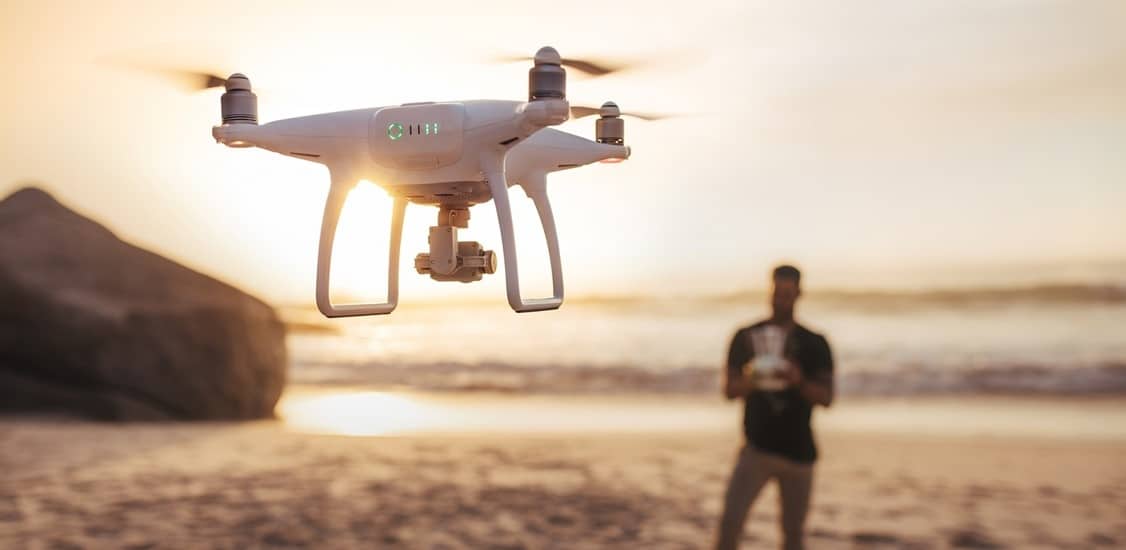Is it a bird, is it a plane? Actually, it’s a drone, and it’s unlikely to be alone. According to PwC the use of drones is quite literally on the rise. Commercially, the uptake of unmanned aerial vehicles (UAVs) across industry verticals such as infrastructure, agriculture, transport, insurance, and telecoms has really taken off. This year, PwC estimated the total market value of drone-powered solutions at more than US$127bn.
Within the communications service provider (CSP) industry, drones can be used to support multiple engineering and network performance tasks. As a starting point, they can be used for cell tower inspections, for the measurement of data rates and even to deliver network coverage in disaster areas or for large events.
In Japan, for example, DOCOMO has already invested in the use of drones for the safe and efficient inspection of its own infrastructure. It is now also considering rolling out plans to offer building and site inspections as a commercial service to other organizations. Meanwhile in the USA, AT&T plans to use LTE-connected drones to support its new FirstNet service - a nationwide public safety network the carrier is building for the U.S. government.
But the value of drones to the mobile operator or CSP community doesn’t just lie in their own use or indeed their potential as a commercial offering. There is another, even more valuable, opportunity emerging for CSPs that could be worth close to $20 billion. Communications Service Providers are actually in a unique position to become the ‘drone air traffic controllers’ of the future.
Here’s what’s required. Unlike most other mobile-connected devices, drones must be able to cope with specific challenges that normal ground-centric wireless networks are not designed to meet. These include conforming with the requirements of regulatory bodies outside of the communications sector - such as those bodies governing the use of airspace and airspace communications - and also meeting the various KPIs related to the control mechanisms of the drones themselves.
This means managing the UAV ecosystem will require seamless coordination between regulatory authorities, radio space, airspace, communications service providers and the owner of the UAV. The drone air traffic controller will need to be able to effectively log drone missions, authorize and plan routes, determine each drone flight is compliant to all prevailing regulations, and ensure that the supporting ground network is configured to deliver the required quality of communications service, as specified in KPIs such as latency, throughput, network availability and more.
Put in another way: the autonomous operation of UAVs requires full 3-dimensional knowledge of the airspace. This covers specific airspace limitations, such as no fly zones and obstructions; radio signal space, including interference patterns and factors that can affect communications to and from the drone; and meteorological data, such as wind speed and direction, temperature, and cloud base. This 3D radio connectivity ensures the control, communication, and tracking required for the successful operation of UAVs across multiple use cases. The wireless CSP community is in a good position to seize this opportunity since it has been successfully delivering 2D digital operations for more than 30 years.
By utilizing existing network investments - such as LTE, LTE-M and the upcoming 5G networks - CSPs can quickly create the 3D network required to deliver two-way communication between a drone and a network base station. This will enable them to identify, monitor and track drone traffic using similar methods to traditional Air Traffic Controllers. For example, once the drone is airborne, the CSPs can optimize routes directly from the gateway based on real-time weather feeds. By making use of advanced data analytics and artificial intelligence CSPs can also ensure the routes chosen protect the safety of other air traffic, people and property.
Of course, to really embrace this opportunity we will require something more than the standard CSP OSS solution. But a little investment to open up a near $20bn market seems justified. To help CSPs capitalize on the opportunity we have developed a platform we are calling AirborneUTM. This is a service enablement platform for UAVs that will allow CSPs to manage their 3D radio network, to register drones on the network and to create, plan, and optimize UAV operations to ensure full regulatory compliance across all environments.
The platform supports Beyond Visual Line of Sight (BVLOS) flights - which are those drone flights not restricted by how far the ‘pilot’ can see - and will enable CSPs to support the control and communications needs of a wide range of next generation IoT services delivered by drones. By integrating third-party data feeds with policy controls, CSPs can be certain of compliance with airspace and other drone-related safety regulations when they are helping to plan, launch and monitor drone missions.
So, when it comes to the future of air traffic drone control, this is a market opportunity where CSPs are "cleared for take-off”.




















